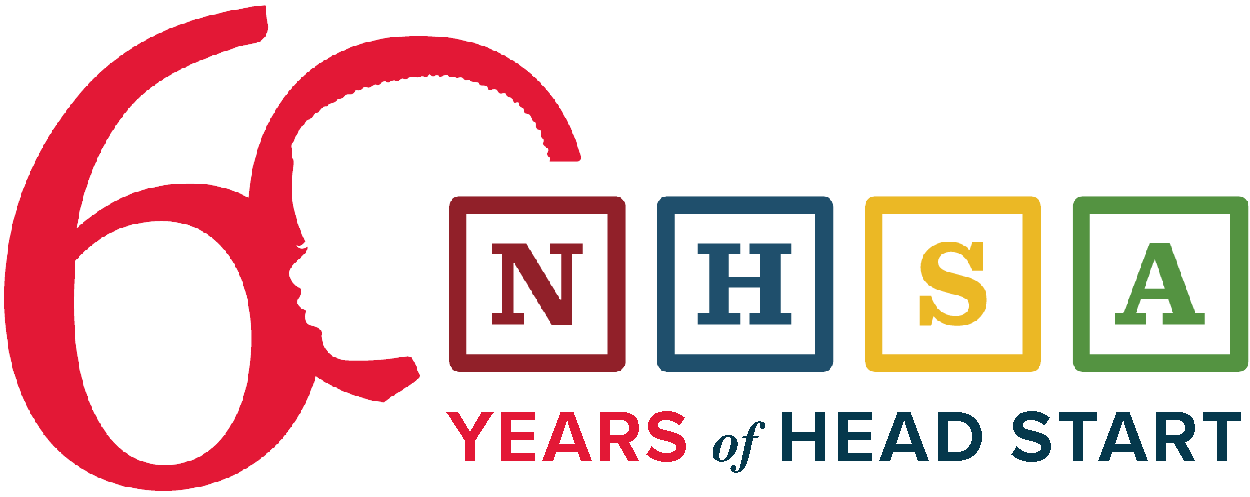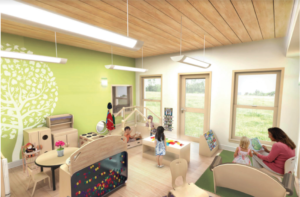Leaders in Fort Worth and Tarrant County, Texas are working to expand access to high-quality infant and toddler care through Early Head Start. The below case study captures their story, including seven keys to success. Their work is a model for how to approach the challenging issue of expanding infant and toddler capacity. NHSA thanks Child Care Associates for sharing their work and experience.
Community leaders in Fort Worth and Tarrant County, Texas are like those in most of America: they want all young children to be safe, grow up healthy and ready for school, and thrive. Yet, they face enormous challenges due to entrenched poverty and a lack of affordable early care and education for families, especially for infants and toddlers.
In Tarrant County, 93% of children in families with low-incomes live in a child care desert, lacking access to subsidized child care, with 98% living in quality child care deserts. There is a particular lack of an infant and toddler infrastructure to ensure a balanced birth-to-five early childhood education system. While Early Head Start is a proven Head Start model to positively affect the brain development, health, and wellbeing of pregnant women and children from birth to age three, only one in 10 income-eligible children and their families have access to Early Head Start services.
Kara Waddell is an early childhood and Early Head Start leader at the center of transformation in Tarrant County. Waddell is the president and CEO of Child Care Associates (CCA), a leading provider of early care and education and family support. Currently, CCA operates 75 Head Start classrooms, serving 1,324 low-income preschoolers. In addition, they serve 492 infants, toddlers and pregnant women through 48 high-quality Early Head Start classrooms. CCA also manages child care funds, assisting 12,881 children of working families, providing direct services to over 200 child care programs to improve quality, and business coaching to over 400 more programs.
A Once-in-a-Decade Opportunity
For years, Waddell and her leadership team had been looking at the data showing tremendous need for infant and toddler care. They had engaged community leaders, but lacked the funding necessary to see that change occur. With the passage of historic, one-time federal funding to prop up communities during the COVID-19 pandemic, Waddell saw a once-in-a-decade opportunity to expand infant and toddler care.
In her words: “The federal recovery dollars provided the heat for the popcorn to pop.”
Pairing Early Head Start’s stable, federal funding and high-quality program with local American Rescue Plan Act (ARPA) dollars created a recipe for success that has been embraced by the larger community, leveraging $84 million dollars for improvements to the local early childhood landscape and resulting in a historic opportunity to achieve three major goals:
- Expand the number of local Early Head Start slots by 400 across 50 new classrooms, with a special focus on serving children and families with the highest need;
- Sustain these investments through a balanced portfolio of birth-to-five services, buoyed by federal Early Head Start and Head Start funding and state and local pre-K grants; and
- Raise wages and build jobs and career pathways for the local early childhood workforce.
A Blue Ribbon Action Committee on Infant and Toddler Care
For over five years, CCA and other community leaders witnessed the growing crisis in early education and care—a shortage of infant and toddler classrooms, child care locations that did not meet the community’s need, increased costs, and stagnant wages for the early childhood workforce resulting in rampant turnover. The COVID-19 pandemic only exacerbated the crisis.
In response, Fort Worth Mayor Mattie Parker, Arlington Mayor Jim Ross, Tarrant County Judge Glen Whitley, and CCA joined forces to form the Blue Ribbon Action Committee on Child Care (BRAC) to “capitalize on significant public investment opportunities from the ARPA and address longstanding issues in child care and early education.”
Mayor Parker has been a driving force behind the BRAC, making a strong business and economic case for early childhood investment.
“It just makes common business sense to invest in our youngest, the future of our workforce. We understand the majority of brain development happens between zero to five, yet our investment is often lopsided. When I speak to business leaders, their ears perk up. This is not how they would run their businesses, so why do we invest like this in our country? It does not make sense.”
The BRAC approach was critical to these local leaders, because they needed a way to engage different voices and perspectives and reach a consensus that included fresh thinking:
“[When identifying Committee members] We looked for people who were bold, innovative, and persuasive. We didn’t want the same ideas circulating that may not have worked previously, but rather, new ways of thinking to address persistent issues,” said Karin Scott, CCA's chief performance officer.
With an intentional focus on innovative thinkers and diverse perspectives, the BRAC ended up with 16 members, 50% women and over 50% people of color, representing a wide spectrum of community service organizations and businesses.
4 Key Priorities for Expanding Access to Infant and Toddler Care
Ultimately, the BRAC settled on four key priorities:
- Expand and improve quality early education infrastructure, especially for infants and toddlers;
- Build a sustainable pipeline of quality early educators;
- Invest in community-based child care and have public and private options available for prekindergarten with a focus on a mixed delivery 0-5 system; and
- Transform the cost model into one that is sustainable through layered funding to cover the true costs of quality child care.
The BRAC’s focus on sustainability reflected the need to consciously address the limitations of the existing, broken way that early childhood is funded and the need to focus on the entire continuum of care from birth-to-five, to support the full spectrum of child development prior to Kindergarten entry.
“One of the greatest challenges is to break from doing the same thing repeatedly. We all still need infant and toddler care spaces, but we keep expanding preschool classrooms. We must expand our thinking to address a zero-to-five system as a whole,” said Catherine Davis, CCA's director of policy.
The BRAC hired a data analytics company to examine, evaluate, and analyze five years' worth of Head Start and other available data. Based on the assessment, the company develops predictive analyses and determines the long-lasting value of investments. In response, CCA and the BRAC set the goal of increasing the number of Early Head Start infant and toddler classrooms by 50, representing the opportunity to serve 400 more children with low-incomes and their families and rebalance available preschool and infant and toddler slots.
Reaching this goal requires a balance of ongoing funding and the one-time investments made possible by federal recovery funding and local decisions about how to allocate them. CCA’s work over the years, including community assessments, presentations to city councils, county leaders, and community organizations, positioned them to bring immediate concepts for funding to address the infant-toddler deserts and low percentages of Early Head Start services to the BRAC.
With COVID-19, CCA quickly began to think strategically about the challenges facing child care and how they were exacerbated by issues related to the pandemic. As a result of CCA’s efforts, the BRAC has been able to tackle the big issues facing the early childhood education system in their community by strategically funding efforts that address the current issues.
Funding Allocated to Support Early Head Start Expansion and Sustainability
As part of the $45 million ARPA approved by the Tarrant County Commissioners Court, $28 million in funding was allocated to expand infant-toddler access and infrastructure for highest-needs families. Through new public-private partnerships, the goal is to double the $28 million to $56 million through donated land, services, buildings, and resources. Tarrant County and CCA are launching a community call for proposals from other public entities for new public-private partnerships.
The Challenge Ahead: the Early Childhood Workforce
With respect to implementation, Waddell and her team inevitably mentioned the challenge of finding and retaining the early childhood workforce, which has seen such rapid burnout and turnover. CCA has employed a variety of creative efforts in their programs, including:
- Monthly stipends paid for with COVID relief dollars;
- Helping eligible teachers apply for Texas Workforce Commission sustainability grants; and
- Working with local child care providers, high schools, and community colleges to establish apprenticeship programs.
Community-wide, they have helped to enroll over 400 early childhood staff in apprenticeship programs and pay 100% tuition for those seeking an Associates of Arts or Bachelors of Arts through a statewide effort funded through Texas Workforce Commission investments and local workforce boards.
As a rule, CCA administrators take pride that so many of the teachers they hire and train move into elementary school classrooms where they may earn more, but the children and families in CCA programs feel that sting.
“They [CCA teachers] develop skills and then go out into our community to continue to serve children, but the turnover and loss is happening at a great pace right now. It’s too fast. It goes beyond wages. We have to take a look at burnout and how to help staff feel supported by the team and at work. We are working on creating desirable jobs with wellness models, paid time off and support for educational goals,” said Scott.
Building Greater State Support
Waddell acknowledges that state policy is critical to support creative local efforts, such as the one she helps to lead. Among her wish list for Texas early childhood policy:
- A truly integrated and aligned prenatal-to-five system with a mix of community, school and Head Start options;
- Expanded use of contracts (versus vouchers) in child care funding, which would particularly help to stabilize child care and strengthen Early Head Start; and
- Data sharing across states, localities, and various service delivery organizations, including child and workforce data.
Above all, Waddell recognizes that any effort local, state or federal to improve early care and education, especially at the scale being driven by CCA and the BRAC, has to be driven by high levels of accountability and stewardship.
“If we are publicly funded, we have to be publicly accountable.”
Seven Key to Success in Expanding Access to Early Head Start
Early Head Start Rising
Millions of infants and toddlers who qualify for Early Head Start cannot access it due to limited resources and a lack of awareness. They are counting on us to act. We hope you will join us to help Early Head Start rise in communities all across this nation.







